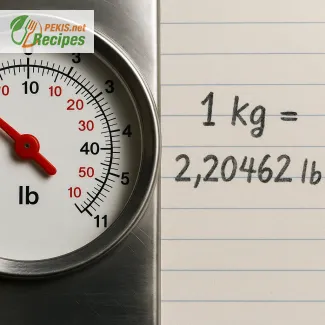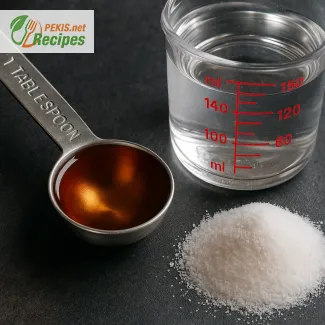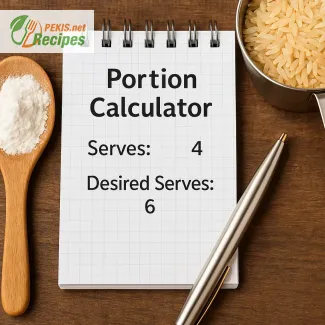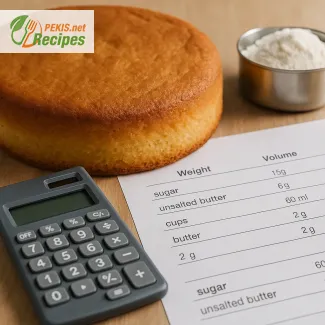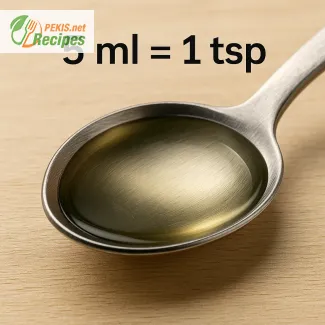
Understanding 5 ml in Tablespoons: A Practical Kitchen Guide
Why 5 ml to tbsp conversions matter in everyday cooking
Whether you're following a recipe from the UK, Europe, or the US, understanding how to convert 5 ml to tablespoons (tbsp) can make a surprising difference in your cooking. Precision in measurements can be the key to balanced flavors, correct consistency, and even the success of certain delicate recipes like sauces, dressings, or baked goods. In this guide, we’ll walk through the exact conversion from millilitres to tablespoons, practical usage examples, and what to watch out for when you're cooking across different measurement systems.
How many tablespoons is 5 ml?
The direct and most accurate conversion is:
5 ml = 0.338 US tablespoons
5 ml = 0.25 UK tablespoons
5 ml = 1 teaspoon (US and UK)
Because 5 ml is exactly one metric teaspoon, many cooks mistakenly assume it’s also equivalent to a full tablespoon — but that’s not the case. A tablespoon is a larger unit than a teaspoon. If you're using standard US tablespoons, one tablespoon equals 14.79 ml. So, 5 ml is just over 1/3 of a tablespoon.
Why tablespoon sizes vary by region
This is where it gets a bit tricky. The size of a tablespoon isn't universal:
- In the US, 1 tablespoon = 14.79 ml
- In the UK, 1 tablespoon = 15 ml
- In Australia, 1 tablespoon = 20 ml
So when you see a recipe online, understanding where the recipe originates from is essential to avoid using too much or too little of an ingredient. For example, adding 1 tablespoon of lemon juice instead of just 5 ml (1 teaspoon) can completely shift the acidity balance in a delicate vinaigrette or cake batter.
Cooking with 5 ml measurements: when precision counts
You might think a few millilitres here or there won’t make a difference, but in baking, sauces, and cocktail making, it really can. Here’s when converting 5 ml to tbsp becomes critical:
- Baking: Yeast or baking soda measurements must be precise.
- Sauces and dressings: Strong ingredients like vinegar, soy sauce, or hot sauces can overpower if used in excess.
- Cocktails: Even 1 ml too much or too little can throw off balance, especially in bitters or spirits.
What measuring tools work best for 5 ml?
While you can technically try to estimate 5 ml with a tablespoon, it’s far better to use:
- A teaspoon (standard 5 ml)
- A syringe or small measuring pipette
- A digital kitchen scale with ml function
Using a full tablespoon and trying to estimate a third is often inaccurate unless your tablespoon is specifically marked with subdivisions. Many modern measuring spoons do include ¼ and ½ tablespoon marks, which makes this easier.
Converting 5 ml to other common units
Aside from tablespoons, here’s how 5 ml breaks down in other kitchen units:
- 5 ml = 1 teaspoon
- 5 ml = 0.33 tablespoon (US)
- 5 ml = 0.25 tablespoon (UK)
- 5 ml = 0.17 Australian tablespoon
- 5 ml = 0.17 fluid ounce (fl oz)
- 5 ml = 1,000 drops (approx., depending on liquid)
This last number – drops – shows just how tiny 5 ml really is. For delicate applications like essential oils, flavor extracts, or medicine dosages, drop-by-drop measurement is used.
Common recipes that use exactly 5 ml
There are surprisingly many everyday recipes and products that require exactly 5 ml, especially:
- Vanilla extract in cookies and cakes
- Soy sauce in sushi rice or stir fry marinades
- Vinegar in homemade salad dressings
- Lemon juice in pancake batters
- Honey in health drinks and smoothies
In most of these, the balance between sweet, sour, and salty flavors is delicate. Adding too much of even a small-volume ingredient can overwhelm the dish.
A real-world example: misjudging 5 ml in a recipe
Let’s say you're preparing a delicate hollandaise sauce and the recipe calls for 5 ml of white wine vinegar. If you substitute that with a full tablespoon by mistake, you're adding three times the required acidity, which can cause the emulsion to break or the flavor to become overly sharp. That’s why accurate conversion of 5 ml to tablespoons is so essential, especially in precise recipes.
Tips to avoid common measurement mistakes
- Always check the origin of the recipe to understand whether it's using US, UK, or Australian tablespoon measurements.
- When in doubt, measure 5 ml as 1 teaspoon instead of estimating in tablespoons.
- Consider investing in metric measuring spoons that include both ml and tbsp/tsp markings.
- Be especially cautious when measuring strong flavorings, acids, or extracts.
Why knowing 5 ml in tbsp matters more than you think
While 5 ml may seem like an insignificant amount, it's a frequently used volume in recipes and household products. Misunderstanding it can lead to imbalanced dishes, wasted ingredients, or even failed baking attempts. By knowing that 5 ml equals 1 teaspoon, or roughly ⅓ of a US tablespoon, you can approach your recipes with more accuracy and confidence.
In the world of cooking, precision equals consistency. So whether you're whipping up a vinaigrette or baking muffins, now you’ll know exactly how much 5 ml really is — and why converting it properly to tablespoons can make or break your dish.
